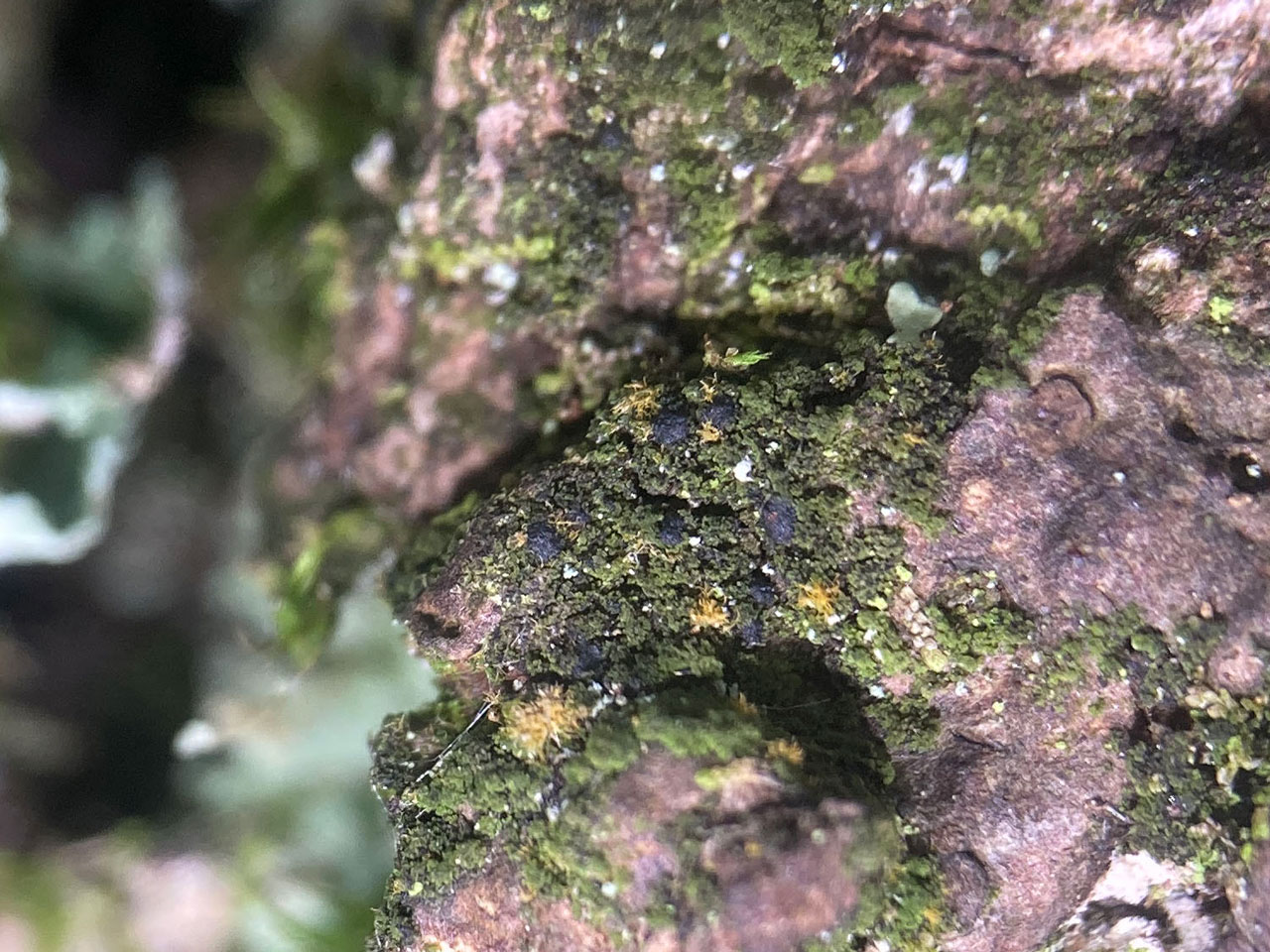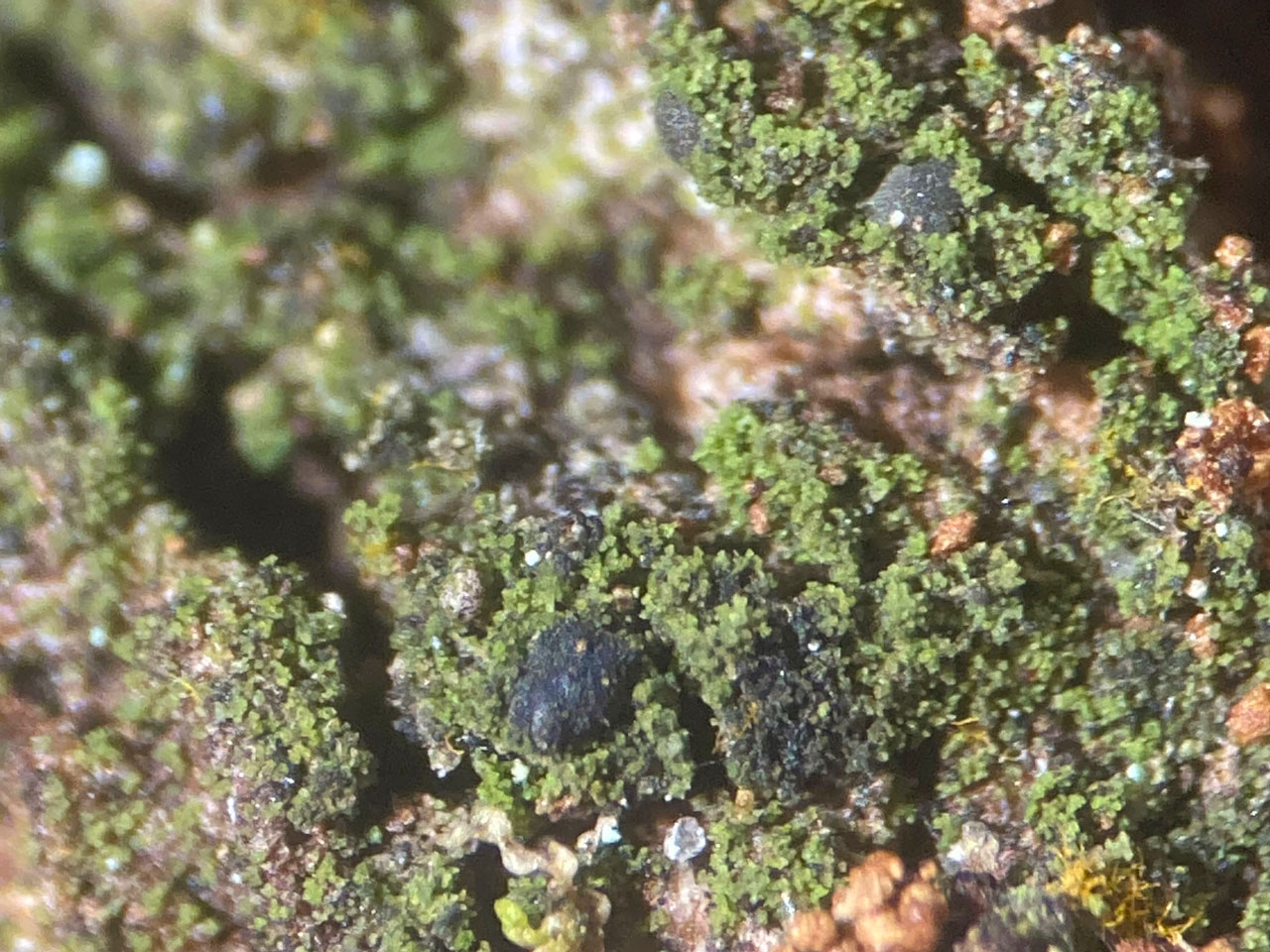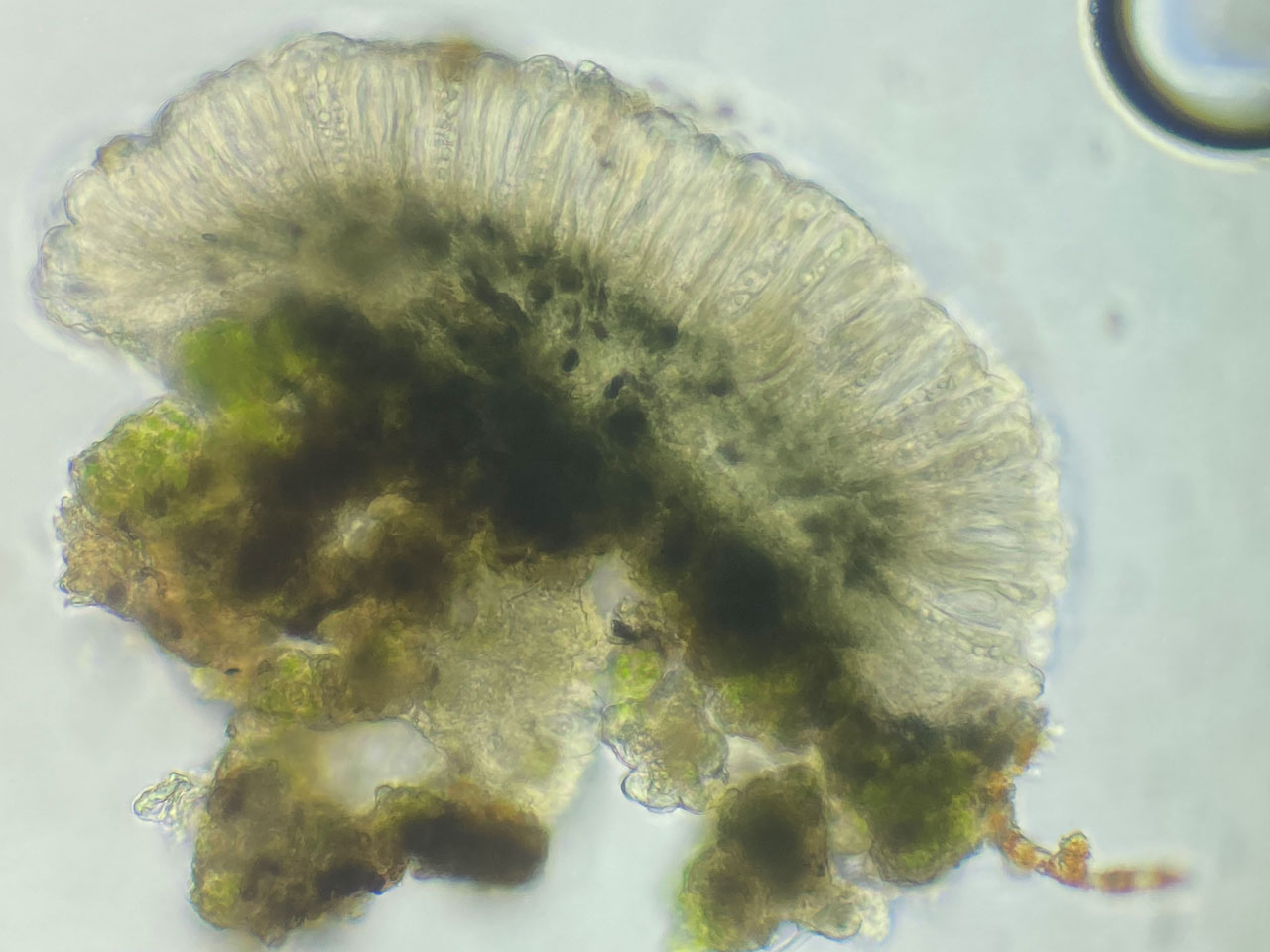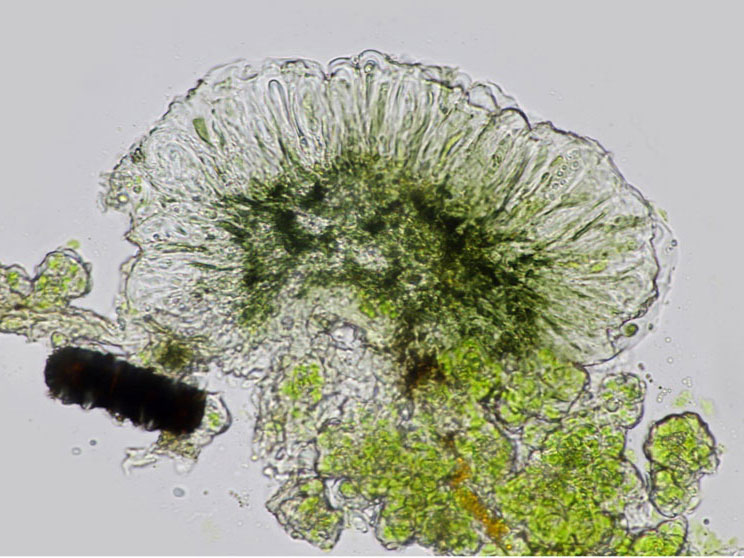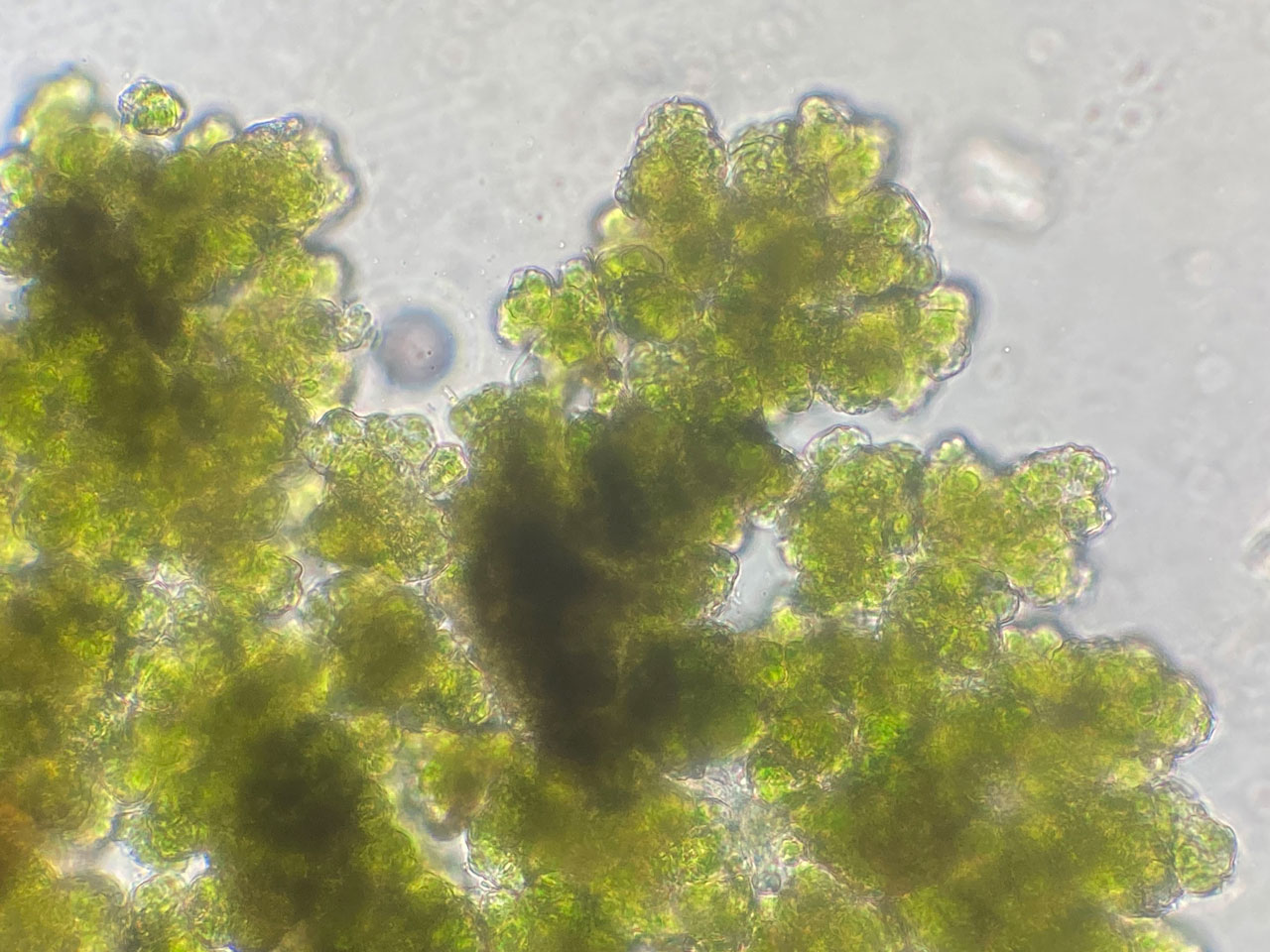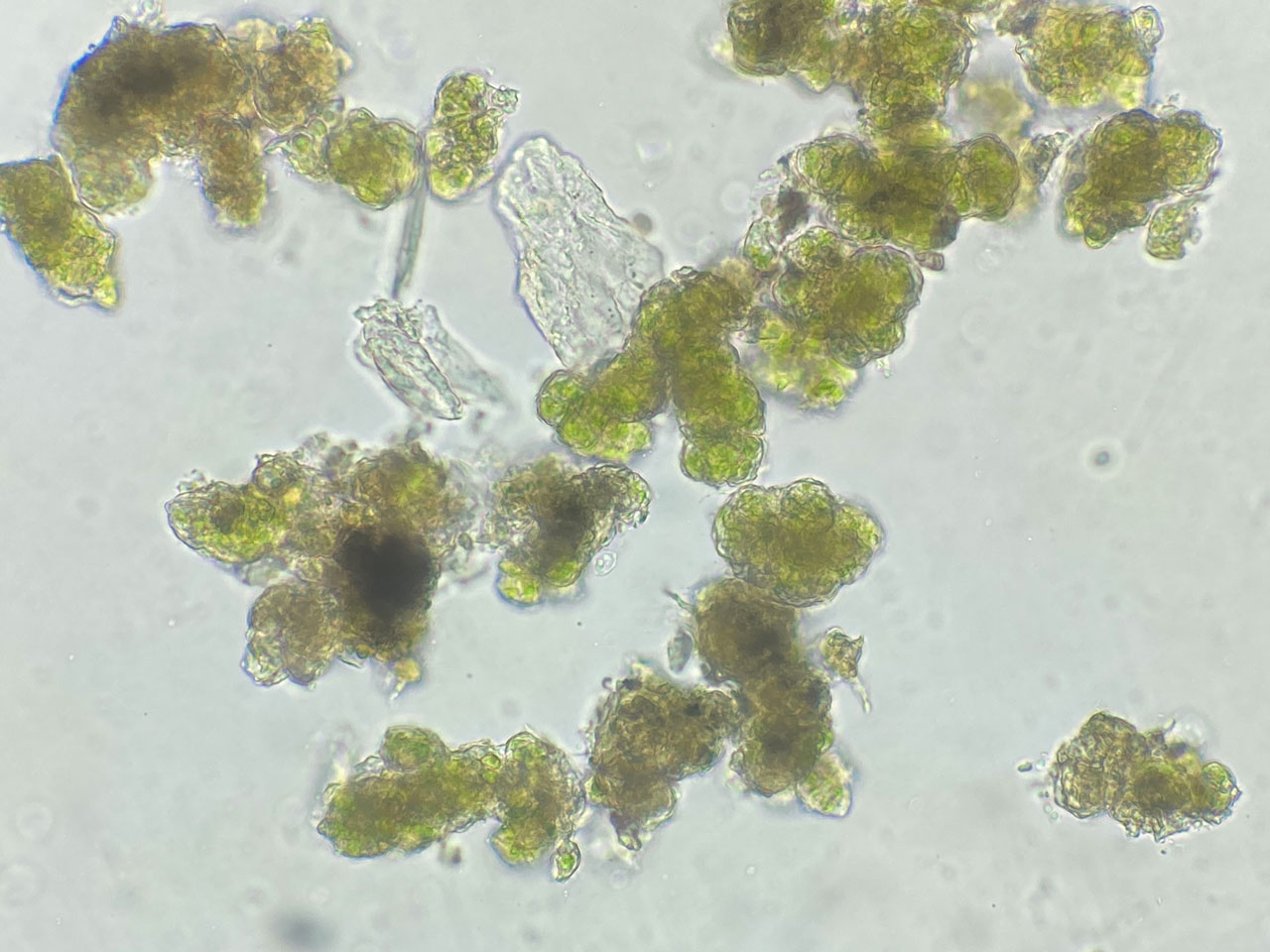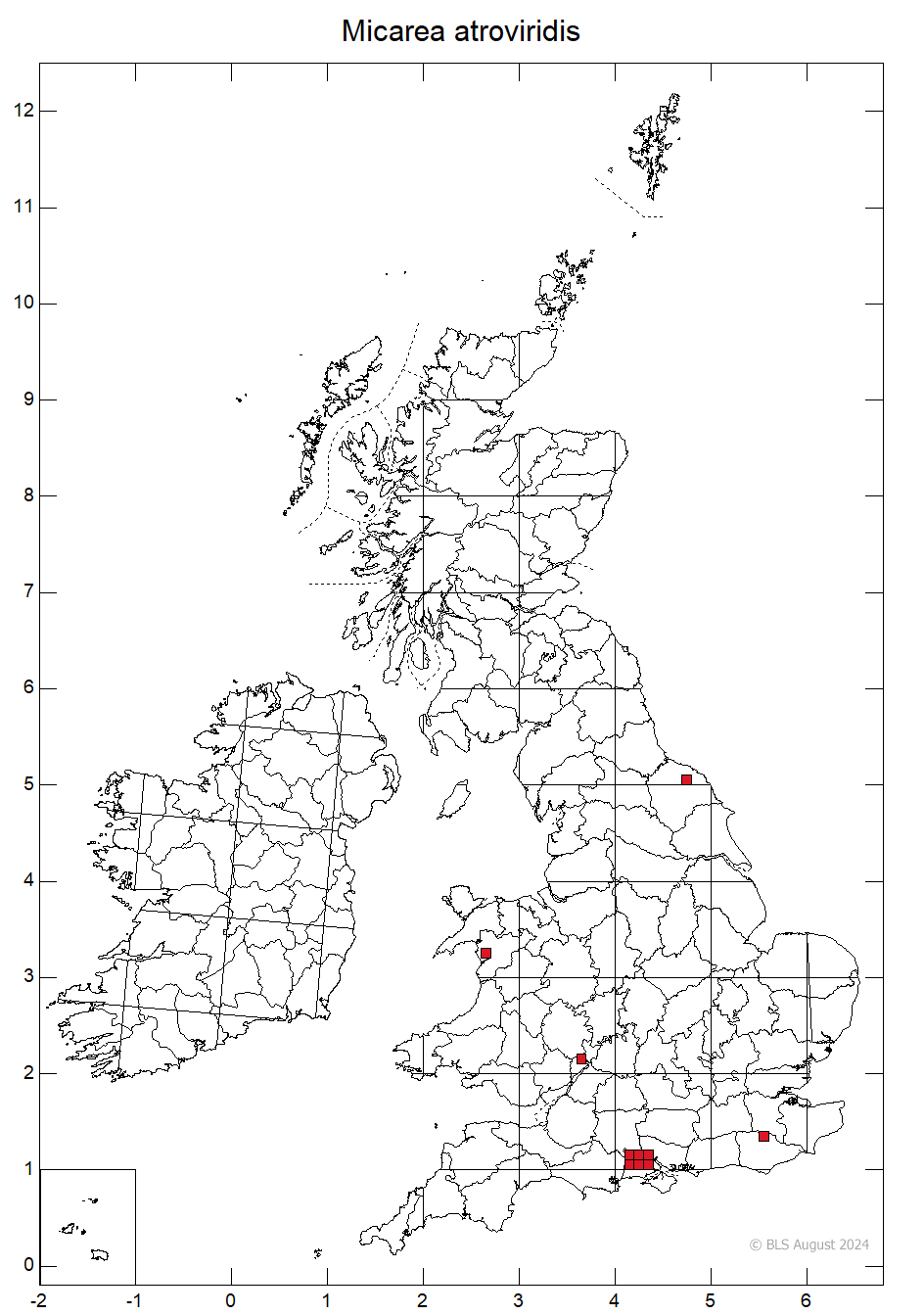Crusts of isidiate Micarea prasina s. lat. taxa are a feature of acid bark and dead wood in old woodland, but their identity has long been obscure. Guzow-Krzemińska et al (2019) separated four species, of which three are now known in Britain. They are possible to separate when fertile, but unfortunately most thalli are sterile, in which case the species can only be reliable separated by sequencing. Fortunately Micarea atroviridis appears to be quite frequently fertile, and once the dark black apothecia are spotted can easily be confirmed by the dark green pigment in the apothecia (Cinereorufa-green).
Thallus giving rise to abundant green to dark green, branched to coralloid isidia, with POL+ granules (soluble in K), frequently with patches of an olive-brown K– pigment. Apothecia dark grey to black, 0.15–0.5 mm diam., flat to moderately convex. Hypothecium colourless or patchily dark green, K+ brightening (Cinereorufa-green), hymenium greenish, epithecium colourless or with Cinereorufa-green; all parts POL–. Paraphyses sparse, branched, 1–1.5 μm diam. Ascospores narrowly cylindrical to clavate, (0–)1-septate, 7.5–12 × (2.5–) 3–4.5 μm. Micropycnidia rare, 30–60 μm diam., with a dark brown apex, K–, C–; microconidia bacilliform, 7–10 × 0.5-0.9 μm. Chemistry: K−, C−, Pd−. TLC: methoxymicareic acid.
Frequently fertile and distinguished from other members of the M. prasina group by the dark green pigment (Cinereorufa-green) in the apothecium (with a corresponding absence of Sedifolia-grey and lack of POL+ crystals). Sterile material of distinctly isidiate species may be difficult to distinguish, but M. aeruginoprasina and M. isidioprasina contain micareic acid, and the isidia of M. aeruginoprasina, at least, are less densely branched and lack the patches of K– olive-brown pigment. In the field the typically dark black apothecia of Micarea atroviridis are distinctive, but paler mottled apothecia of this species can occur and these are visually very similar to those of Micarea aeruginoprasina.
Micarea nigra van den Boom et al. (2019) in Guzow-Krzemińska et al (2019) is a later homonym of M. nigra (Huds.) Fr. (1825) – a synonym of Placynthium nigrum (Huds.) Gray, so a new name was introduced for this species in Cannon et al (2022).
On acid bark of Oak, Birch and Alder, and on Quercus lignum in well lit trees in sheltered old woodlands. Appears to occupy better lit trees than those with confirmed M. aeruginoprasina but has been recorded growing with M. isidioprasina on a standing dead Oak.

The first records were from Somerset and New Forest, but it is likely much more widespread and has since been recorded from Sussex, North East Yorkshire and North Wales. Potentially a widely distributed south oceanic species. Previously the only known record was from the trunk of a tree fern in gardens of Sintra Palace, Portugal (Guzow-Krzemińska et al, 2019).
Currently little known, but it seems unlikely to be threatened. Potentially a Notable species of less disturbed old woodland.
Cannon, P., Orange, A., Aptroot, A., Sanderson, N., Coppins, B. & Simkin, J. (2022). Lecanorales: Pilocarpaceae, including the genera Aquacidia, Byssoloma, Fellhanera, Fellhaneropsis, Leimonis and Micarea. Revisions of British and Irish Lichens 27: 1-48.
Guzow-Krzemińska, B., Sérusiaux, E., van den Boom, P.P.G., Brand, A.M., Launis, A., Łubek, A. & Kukwa, M. (2019). Understanding the evolution of phenotypical characters in the Micarea prasina group (Pilocarpaceae) and descriptions of six new species within the group. Mycokeys 57: 1–30.
Text by Neil A Sanderson based on Canon et al (2022)
